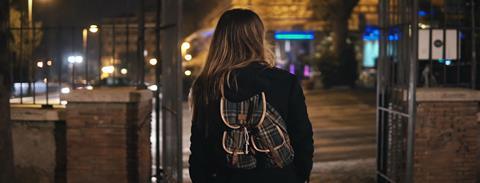Landscaping specialist, Marshalls releases a series of design pillars that it hopes will encourage the industry to design safety into public spaces

With the clocks going back on Sunday 30th October, a new report from landscaping specialist, Marshalls revealed that four out of five people feel more unsafe when it’s dark in public spaces and are on average 12 times more likely to avoid such areas than in daylight hours.
The Creating Safer Spaces white paper highlights the significant difference between how the public view spaces at different times of the day and proposes a series of design pillars that it wants to encourage architects, designers, planners and others in the industry to consider, ensuring safety is integrated into public spaces.
With the push towards 24-hour cities, the timely delivery of this whitepaper aims to design public spaces so that users feel - and are - safe when using them in the dark.
As part of the research, Marshalls found that parks and gardens were considered the least safe spaces when it’s dark, with 80% of people avoiding them during this time – 40 times higher than in the daytime. Waterways, such as canals, were seen as the least safe public spaces when it’s light; 11% stated they actively avoided such places during this time, however, when it’s dark, this figure increased almost seven times to 76%.
A new report from landscaping specialist, Marshalls revealed that four out of five people feel more unsafe when it’s dark in public spaces and are on average 12 times more likely to avoid such areas than in daylight hours.
Residential streets were considered the safest of all public spaces, yet nearly a quarter (24%) said they still avoided them when it’s dark. Beaches, transport hubs and town centres were also named as places people would avoid primarily when it’s dark.
As part of its Creating Safer Spaces white paper, Marshalls also explores the reasons for the public’s heightened awareness of safety when it’s dark. People cited poor visibility as an issue, whereby potential dangers or hazards are concealed or out of sight. A lack of ‘social presence’ from less use of spaces by people when it’s dark was also raised as a reason for safety concerns.
The landscaping specialist also uncovered that people feel most at risk on a night out, with 31% of all participants citing this as an activity where they do not feel safe. Other activities included waiting for public transport (22%), exercising outdoors (16%), walking the dog (12%) and commuting (10%).
Translating perceptions into actions, the results showed people commonly change their behaviour to improve their perceived levels of safety when out in public. The most frequent modification was walking a longer route that is busier and/or better lit (64%), followed by crossing the street to avoid others (58%). Further changes included only wearing one earphone or listening at a lower volume (32%) and carrying a personal alarm (11%).

To support planners, designers, architects and local councils in creating public spaces where people feel safe from day through to night, Marshalls has outlined seven best practice design pillars within its white paper. Covering principles from vision and wayfinding, to acoustics and technology, these considerations should be used by industry to provoke fresh thinking and debate, according to Marshalls.
Johanna Elvidge, Head of Design at Marshalls, said: “Simple design choices such as the height of a hedge or the use of textured materials, for example, can have a big impact on whether people feel and are safe in our shared spaces. However, at present principles such as designing wayfinding and acoustics for when it’s dark are often overlooked when planning schemes. By considering safety during the feasibility and concept stages, the principles of ‘designing for dark’ can be seamlessly integrated and even enhance other key principles including biodiversity and accessibility with compelling consequences.”
Supported by the Landscape Institute as well as Neighbourhood Watch, the design pillars encourage the development of mixed-use spaces, creating active streets, avoiding the use of large boundary walls, reducing excess reverberation or echo, utilising tactile paving as standard to aid blind or partially sighted users and using lights to guide pedestrians on a route whilst also illuminating entrances, exits and signage in spaces such as parks.
















No comments yet